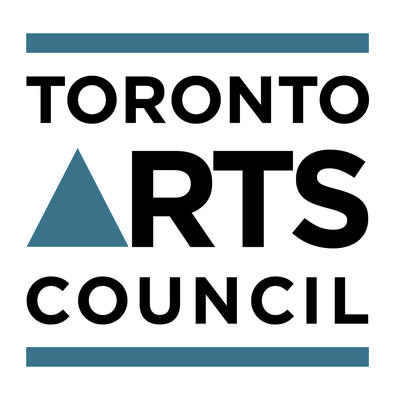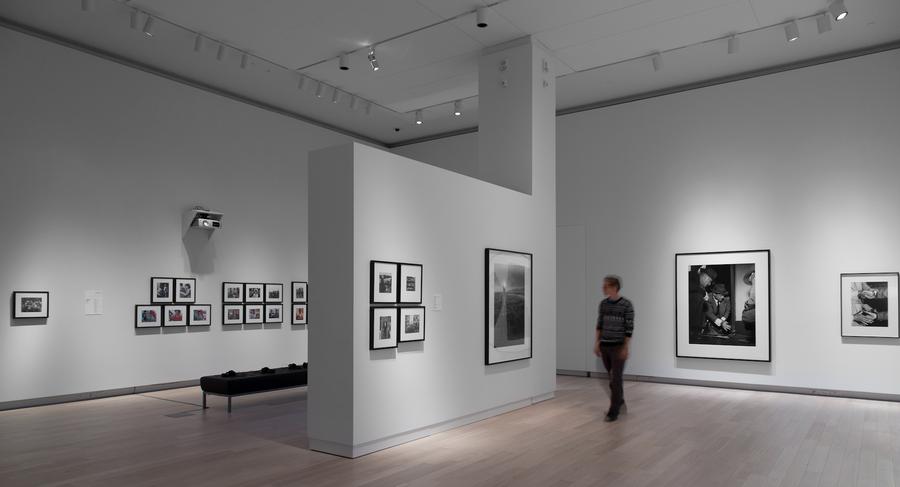Archival Dialogues: Reading the Black Star Collection
September 29 – December 16, 2012
Main Gallery, Student Gallery, and Salah J. Bachir New Media Wall, The Image Centre (formerly Ryerson Image Centre)
Curators: Doina Popescu and Peggy Gale
Archival Dialogues: Reading the Black Star Collection focuses on the Black Star Collection as seen through the eyes of internationally-renowned Canadian contemporary artists Stephen Andrews, Christina Battle, Marie-Helene Cousineau, Stan Douglas, Vera Frenkel, Vid Ingelevics, David Rokeby and Michael Snow.
Each artist has read the archive in their own way, selected images with which to work, and created a newly commissioned art installation in response. By commissioning new works, curators Doina Popescu and Peggy Gale enable vibrant examinations, complex re-contextualizations and exciting contemporary re-interpretations of the historic images.
As viewers of these artists’ works we are offered the rare opportunity to experience the potential for multiple layers of meaning hidden in the archive. At the same time we are invited to explore some of the creative processes behind eight significant contemporary art practices.
Stephen Andrews interweaves film sequences from news stories central to recent history – images from the 1960s of the Kennedy assassination and the murder of Lee Harvey Oswald, the self-immolation of Buddhist monk Thich Quang Duc outside the Cambodian embassy in Saigon, and passages of his own creation in a conceptual “reading” of the Black Star Collection. Through his alchemy of images and of memory, Andrews’ work entitled Dramatis Personae questions the assumptions of photojournalism and cinema verite, seeing cinema as a forensic tool.
Christina Battle’s multi-media project, entitled Archived Disasters, examines photographs of disastrous events across several decades of press imagery. Spilling over the confines of the archive and introducing interpretations resulting from her careful study of news stories published in response to the disasters, including those from the ever-popular “yellow press,” she takes us into the uncanny realm of science fiction.
Marie-Helene Cousineau constructs an installation, entitled Perdre et retrouver le Nord inspired by portraits and snapshots found in the Black Star Collection, which were taken in Baker Lake during the 1960s. Bringing copies of these images with her to the North, she met with the Inuit who had been photographed. Responding to her own experience of living in Igloolik, Nunavut, she also worked with Susan Avingaq and other friends to evoke Northern history and landscapes. Through recounted stories and pictures we glimpse fragments of a world of which we know too little.
Stan Douglas himself writes that the Midcentury Studio project “chronicles the career of a photographer who was introduced to his craft during the war and tried to make it into a business in the postwar period” (1945-1951). Douglas’ photographs in this series are inspired by his meticulous study of the photographers who worked for Life magazine and the Black Star Agency, as well as the obscure Vancouver figure Raymond Munro. The photographs in Archival Dialogues were chosen for their sophisticated relationship to a look that would ultimately be eclipsed in photojournalism, and for their connection to the Black Star Collection in particular.
Vera Frenkel’s video-photo-text installation, The Blue Train, centers on a key phase of the journey of escape taken by the artist’s mother at the outbreak of World War II via a combination of stills, drawings and video that trace the journey through the minds of passengers with whom the experience was shared. The narrative of escape is interwoven with the witnessing narrative of photojournalist Werner Wolff on his 1945 return to Germany. The intimate words and thoughts of the passengers will also be accessible for portable devices over the internet. The Blue Train distills the stress and anxiety of forced migration and the courage of the documentary photographers who captured the experience.
Vid Ingelevics’ Conditional Report examines the contradictions inherent in the archiving process that the Black Star Collection at Toronto Metropolitan University (formerly Ryerson University) is subject to. Conditional Report focuses on the preservation and recording of “original” photographic images by digital scanning versus the destruction of exhibition images produced through that scanning process. Video of these acts is set within a simulation of the temporary storage facility of the collection, complete with the sounds of scanners and air-handling units regulating the environment.
David Rokeby’s installation, Shrouded, presented on the Salah J. Bachir New Media Wall in the gallery’s entrance colonnade, reconstructs the way the fovea (the small central part of the eye which can see detail) passes over the image like a searchlight cutting through a murk of blurry forms, selectively revealing details in Black Star images, sometimes along trajectories determined by the artist, and at other times determined by gestures of the viewer. By separating the mechanism of seeing from the habit of seeing, the artist reframes the process of grasping the image.
Michael Snow’s new installation TAUT utilizes some of the extraordinary Black Star Collection crowd photographs, including demonstrations, rallies, riots and confrontations, in a video projected on classroom chairs, desks and green board covered in white paper. The setting thus becomes a three-dimensional white screen for the twodimensional images of three-dimensional events and places.
Event(s):
Noon Time Collection Talk
Pathways Into the Archive
Doina Popescu
Thursday, February 25
12:00 PM
Panel Discussion
Peggy Gale, Dot Tuer, and Jennifer Allen
Saturday, November 10
1:00 PM
Noon Time Collection Talk
Doina Popescu and Peggy Gale with exhibition artists
Saturday, November 24
2:00 PM
Exhibition Tour
Doina Popescu and Dr. Gaelle Morel
Wednesday, December 12
6:00 PM
Exhibition Tours
Daily 2:30 PM
All events take place at The Image Centre (formerly Ryerson Image Centre), unless otherwise noted
This exhibition is made possible with generous funding from Canada Council for the Arts, Ontario Cultural Attractions Fund, Ontario Arts Council, Toronto Arts Council, Goethe-Institut, the Paul J. Ruhnke Memorial Fund, and The Howard and Carole Tanenbaum Charitable Foundation Fund.





Verso of a photograph from the Black Star Collection, The Image Centre

Christina Battle, still from HD video projection: Mothman. Courtesy of the artist

Marie-Hélène Cousineau, woman with grandfather 3: Eva Nagyougalik, 2011. Courtesy of the artist

Stan Douglas, Demobilization Suit, 1945, 2010. Courtesy of the artist and David Zwirner, NY

Michael Snow, Production still from TAUT, 2012. Courtesy of the artist
Curator Bios
Doina Popescu
Doina Popescu is the inaugural Director of The Image Centre (formerly Ryerson Image Centre). She oversees its academic, administrative, exhibition and outreach functions, and is responsible for maintaining its national and international profile. She is engaged in developing and executing a vision for the new Centre that addresses its three major interrelated areas of activity: exhibitions, research and collections. Each of these areas is being developed to interact with the multidisciplinary academic communities across campus, to dialogue with the arts in Toronto and across the country, as well as to engage in international partnerships. After bringing Edward Burtynsky: OIL and Berenice Abbott: Photographs to Toronto, she has co-curated The Image Centre's (formerly Ryerson Image Centre) launch exhibition entitled Archival Dialogues: Reading the Black Star Collection.
Popescu was previously the Deputy Director of the Goethe-Institut Toronto, where she managed the Gallery and Kinowelt Hall, organising international photography, video and new media-based exhibitions and film events. For more than 25 years she has been deeply involved with both Canadian and international artists and scholars in the visual arts, film, literature, music, cultural theory, history and philosophy. She is a co-founder of the European Union Film Festival and the International Experimental Film/Media Congress. She has served on multiple juries, has spearheaded numerous publications and has guest curated arts programs for galleries and international festivals in Canada and abroad
Peggy Gale
Peggy Gale is an independent curator and writer whose texts on contemporary art, especially video art, have become artistic benchmarks. Born in Guyana in 1944, Gale studied at the University of Toronto and the Universita degli Studi in Florence. She has published extensively, with essays in Video By Artists (1976, 1986), Mirror Machine: Video and Identity (1995) and Lectures obliques (1999), and texts in many museum catalogues. She was editor, among others, of Museums by Artists (with AA Bronson, 1983) and Video re/View: The (best) Source for Critical Writings on Canadian Artists? Video (with Lisa Steele, 1996). Videotexts, a selection of her essays, was published in 1995. She has organized many exhibitions including: Videoscape (Art Gallery of Ontario, 1974-1975); XIV Bienal Internacional de São Paulo (1977); Electronic Landscapes (National Gallery of Canada, 1989); the Biennale of the Moving Image (Madrid, 1990) and Tout le temps / Every Time (La Biennale de Montréal, 2000). Peggy Gale lives in Toronto.
Exhibition Catalogue

Front cover of Archival Dialogues: Reading the Black Star Collection
Archival Dialogues: Reading the Black Star Collection
Editor: Peggy Gale
This catalogue is a complementary piece to the exhibition Archival Dialogues: Reading the Black Star Collection. It includes eight individual artist projects that share with us the respective artist's process of "reading" the Black Star Collection. Each of these sections begins with the reproduction of a Black Star image which played a key role in the individual artist's research. Just as each installation in the exhibition, each artist project in this book allows the viewer to experience the artist's dialogical relationship to the Black Star photographs, thus bringing these important historical objects into new focus within the multiple contexts of contemporary discourse.
Installation Shots

Archival Dialogues: Reading the Black Star Collection (installation view), 2014 © Eugen Sakhnenko, The Image Centre

Archival Dialogues: Reading the Black Star Collection (installation view), 2014 © Eugen Sakhnenko, The Image Centre

Archival Dialogues: Reading the Black Star Collection (installation view), 2014 © Eugen Sakhnenko, The Image Centre


